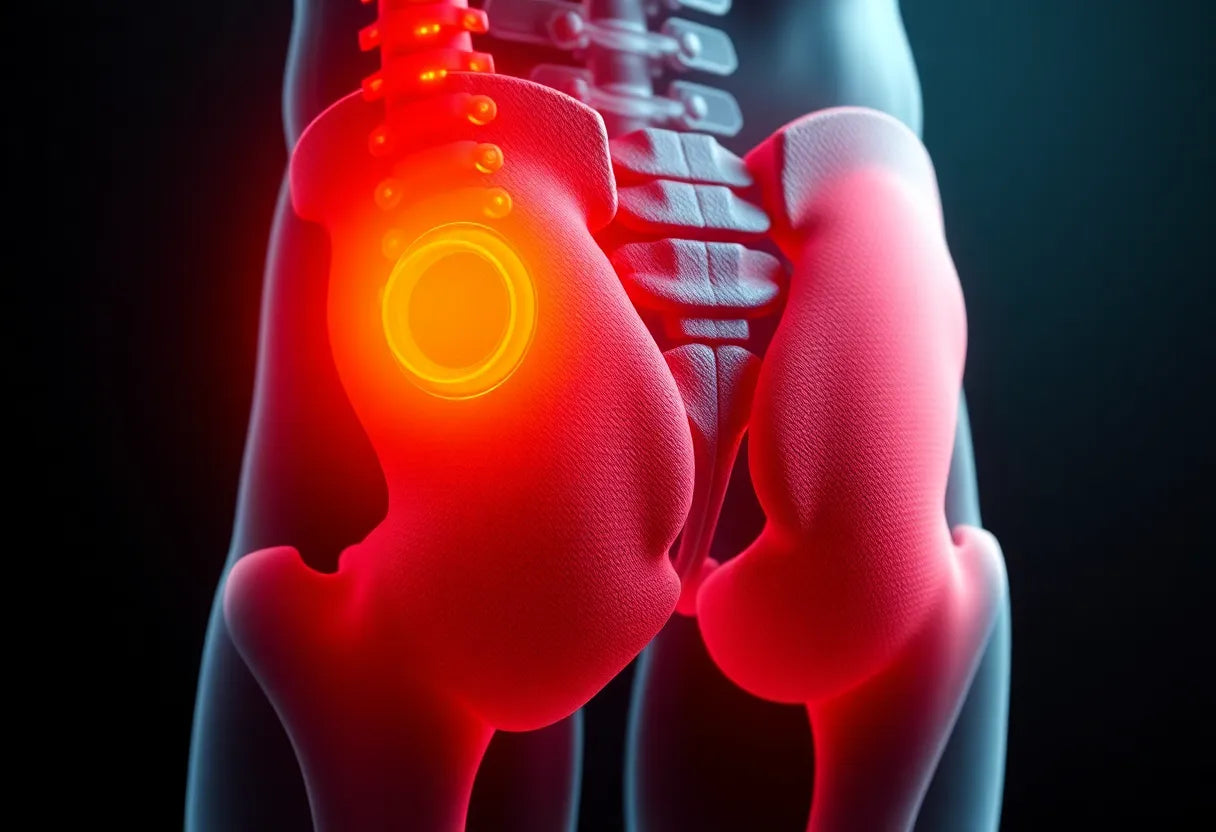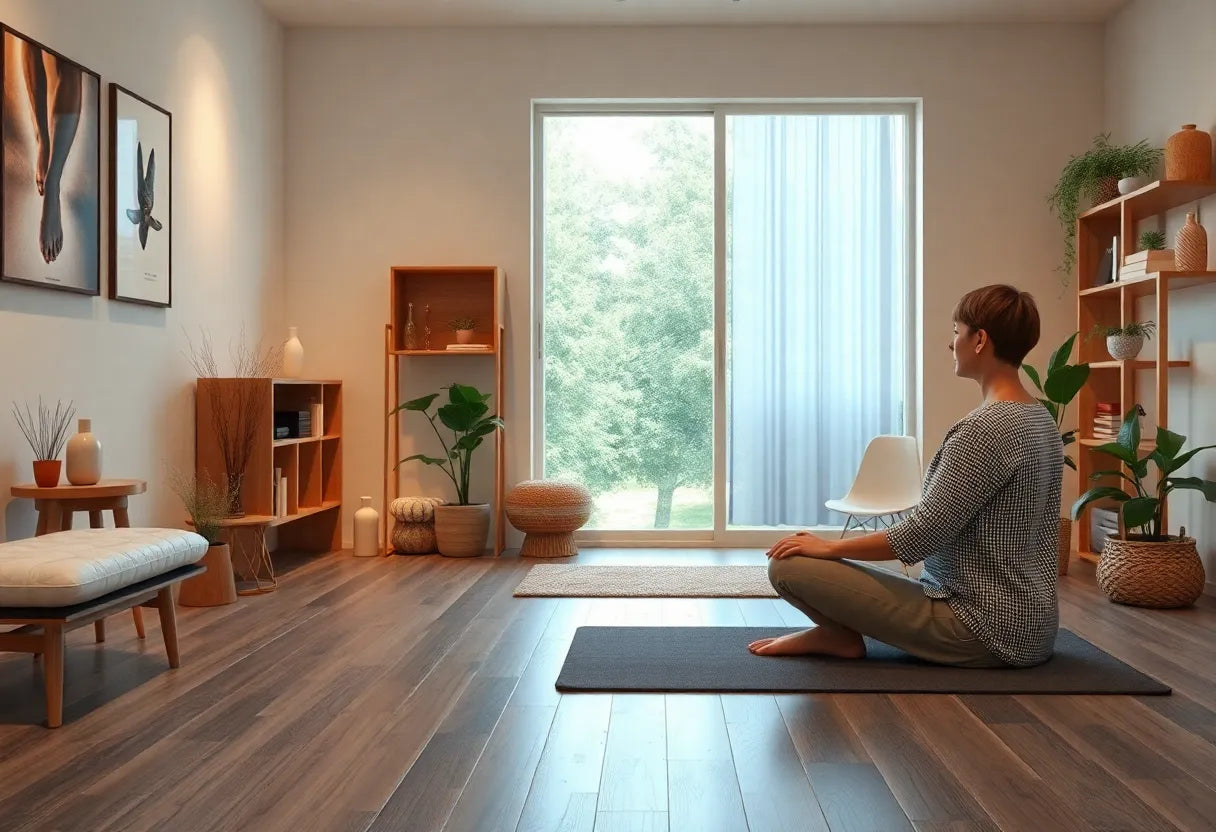Strong glutes and hips are fundamental to both everyday movements and athletic endeavors, playing a pivotal role in maintaining overall body mechanics. Whether you're climbing stairs, lifting groceries, or sprinting on a track, these muscles are at the heart of your body's power and stability. Unfortunately, weak glutes and hips can lead to a host of issues, including lower back pain, poor posture, and decreased mobility, all of which can significantly impact your quality of life.

Lumbar support belt
Supports and relieves the lower back, ideal for pain or tension during activity or sitting.
Targeted exercises for glutes and hips are essential for enhancing strength, stability, and functionality. By focusing on these areas, you can improve your posture, reduce the risk of injury, and boost your athletic performance. Whether you're an athlete looking to enhance your performance or someone seeking relief from chronic pain, incorporating specific exercises into your routine can make a substantial difference.
Understanding the anatomy of glutes and hips
The glutes are a group of three muscles: the gluteus maximus, medius, and minimus. Each of these muscles has a unique role in supporting movement and maintaining balance. The gluteus maximus, the largest of the three, is crucial for hip extension, outward rotation, and maintaining an upright posture. The gluteus medius and minimus, on the other hand, are key players in hip stabilization and lateral movement.
Similarly, the hip muscles, including the iliopsoas, adductors, and abductors, are vital for a wide range of movements. They work in harmony with the glutes to facilitate walking, running, and jumping. Together, these muscles contribute to the body's overall mechanics, ensuring smooth and efficient movement patterns.
Understanding the anatomy and function of these muscles sets the stage for incorporating exercises that target glutes and hips effectively. By doing so, you can unlock new levels of strength and stability, leading to improved performance and reduced risk of injury.
In-depth exercises for glutes and hips
Building upon the understanding of glute and hip anatomy, incorporating a variety of targeted exercises into your fitness regimen is crucial for enhancing strength and stability. These exercises not only improve muscle function but also help in preventing common issues associated with weak glutes and hips. Below is a comprehensive list of exercises designed to activate and strengthen these critical muscle groups.
1. Hip thrusts
Hip thrusts are a powerful exercise for activating the gluteus maximus. To perform this exercise, sit with your upper back against a bench and your feet hip-width apart. Drive your hips upward until your body forms a straight line from shoulders to knees. Ensure to squeeze your glutes at the top before lowering back down. This movement is excellent for improving hip mobility and strength. Start with bodyweight and progress to using a barbell or resistance bands for added intensity.
2. Step-ups and lateral step-ups
Step-ups are ideal for targeting the entire glute muscle group while also stabilizing the hip joint. For step-ups, step onto a platform with one foot, driving through the heel to lift your body up. Lateral step-ups involve standing sideways to the platform and performing the same motion, which engages the gluteus medius and minimus more intensely. This exercise can be done using a step or sturdy bench, making it versatile for home or gym workouts.
3. Single leg Romanian deadlift (RDL)
The single leg RDL is a fantastic exercise for strengthening the glutes, hamstrings, and core while enhancing balance. Stand on one foot, hinge at the hips, and extend the opposite leg behind you. Return to the starting position while maintaining a slight knee bend. For increased difficulty, add a dumbbell. Focus on keeping your back straight and core engaged throughout the movement.
4. Split squat
Split squats are effective for targeting the glutes, hamstrings, and quads, while also improving unilateral stability. Step one foot forward and lower your hips until the back knee nearly touches the ground, ensuring the front knee remains over the ankle. To increase resistance, perform the exercise with dumbbells. This movement not only strengthens the lower body but also enhances balance and coordination.
5. Glute bridges and single-leg glute bridge
Glute bridges are foundational for activating the glutes. Lie on your back with knees bent and feet flat on the ground. Lift your hips towards the ceiling, squeezing the glutes at the top. For a more challenging variation, perform the exercise with one leg extended. Progress by adding weights to increase the difficulty. This exercise is excellent for building glute strength and improving hip stability.
By incorporating these exercises into your routine, you can effectively target the glutes and hips, enhancing strength, stability, and overall functionality. Whether performed at home or in the gym, these movements are versatile and can be adapted to suit different fitness levels. Remember to focus on proper form and gradually increase resistance to maximize benefits and prevent injury.
Continuing your glute and hip exercise journey
Continuing our exploration of effective exercises for glutes and hips, it's essential to integrate a variety of movements that not only strengthen but also enhance the functionality of these muscle groups. By incorporating exercises such as side-lying hip abduction and banded lateral walks, you can further target the gluteus medius and minimus, which are crucial for hip stability and lateral movement.
6. Side-lying hip abduction
Side-lying hip abduction is a simple yet effective exercise to isolate the gluteus medius and minimus. To perform this exercise, lie on your side with legs stacked. Lift the top leg upwards while keeping it straight, then lower it back down with control. This movement is excellent for strengthening the lateral hip muscles, which support balance and stability. Remember to engage your core and keep your body aligned throughout the exercise.
7. Banded lateral walks
Banded lateral walks are fantastic for activating the gluteus medius, making them an ideal warm-up or pre-habilitation exercise. Place a resistance band around your thighs and take small steps side-to-side, maintaining tension in the band. This exercise not only strengthens the hip abductors but also improves coordination and stability. For added challenge, use a stronger resistance band.
8. Cable hip abduction
Cable hip abduction is an effective gym-based exercise that isolates the upper glutes, crucial for hip stability and posture. Attach an ankle strap to a cable machine, stand upright, and lift the leg outward away from the body. This exercise is excellent for building strength in the gluteus medius. At home, you can use resistance bands to mimic this movement.
9. Side plank with hip abduction
Combining core and hip strength, the side plank with hip abduction is a challenging exercise that targets the upper glutes. Begin in a side plank position and lift the top leg towards the ceiling while keeping your toes pointed down. This movement not only strengthens the glutes but also enhances hip stability. Modify by bending the knees if necessary to ease the difficulty.
10. Standing hip abduction
Standing hip abduction is a straightforward exercise that targets the gluteus medius and minimus, promoting lateral hip strength. Stand upright and lift one leg to the side without tilting your torso. This exercise improves balance and coordination, making it a valuable addition to any lower body workout. Hold onto a stable surface if needed to maintain balance.
Frequently asked questions
Q: How often should I perform these exercises?
A: Aim for 2-3 times per week, allowing for rest and recovery between sessions to optimize muscle growth and prevent overuse injuries.
Q: Can these exercises help with lower back pain?
A: Yes, strengthening the glutes and hips can alleviate stress on the lower back by improving posture and stability, potentially reducing pain.
Q: Are these exercises suitable for beginners?
A: Yes, these exercises can be adapted for beginners by starting with bodyweight versions and gradually increasing resistance as strength improves. Focus on proper form and control.
Q: What equipment is needed for these exercises?
A: Minimal equipment is required, such as resistance bands and a bench. Many exercises can be performed entirely with bodyweight, making them accessible for home workouts.
Q: How can I ensure proper form?
A: Consider consulting a fitness professional or using video tutorials for guidance. Prioritize slow, controlled movements to ensure proper form and prevent injury.
By incorporating these exercises for glutes and hips into your routine, you can build strength, enhance stability, and improve overall functionality. Whether you are working out at home or in the gym, these movements are versatile and adaptable to various fitness levels. Remember, consistency and proper form are key to unlocking the full potential of your glute and hip muscles.

Women's Posture Shirt™ - Black
Activates muscles, improves posture, and can relieve pain during work, exercise, or leisure.
Källor
- ACE Fitness. (n.d.). "Strength Training the Glutes: An Evidence-Based Approach."
- Journal of Orthopaedic & Sports Physical Therapy. (2013). "Gluteal Muscle Activation During Common Therapeutic Exercises."
- Selkowitz, D. M., et al. (2020). "Which Exercises Target the Gluteal Muscles While Minimizing Activation of the Tensor Fascia Lata? Electromyographic Assessment Using Fine-Wire Electrodes."
- Reiman, M. P., et al. (2020). "Gluteal Muscle Activity and Patellofemoral Pain Syndrome: A Systematic Review."
- Grimaldi, A. (n.d.). "Gluteal Muscle Forces During Hip Exercises."
- BarBend. (n.d.). "Jeff Nippard's Best Glute Exercises for Size, Strength, and Activation."
- Arthritis Foundation. (n.d.). "Hips and Buttocks Movements."























